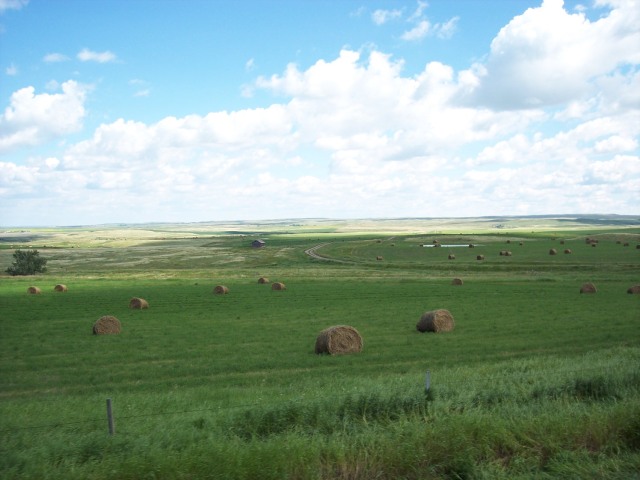The Barefoot Travelers blog has been on a bit of a hiatus……… not because we’ve quit traveling………but because we’ve been having so much FUN traveling! It’s tough to squeeze in the blogging time!
Just to catch you up in real time – we went across Canada as far as Quebec (ran out of time when hurricane Earl washed out our East Coast plans). Made a run back across Canada to Vancouver (our home town) and then hopped on the plane to the Caribbean. What would a trip-of-a-lifetime be without some R&R in the Caribbean?
So after a couple of weeks of tanning on the palm tree studded beaches and sipping mysterious frosty drinks, we felt refreshed enough to continue blogging.
Plus we felt inspired after reviewing our awesome photos!
One of the great things about traveling slowly is that you have the time it takes to pause and get those candid wildlife shots. Canada is especially fortunate in as much as there is enough wildlife density that you can get great shots right from the road. There are very few places in the world left where you can do this. Human habitation and roads have crowded the habitable space for everything else out.
The vast stretches of untouched forest in the North of Canada have been likened to the Serengeti of Africa.
It was seeing these unspeakably huge forests tracts; unmarred by a single fence post or dot of human light, that redefined the word ‘wilderness’ for me.
Most people who live on a farm, or live in a smaller village would say that they live “in the country” or “in the wilderness”.
Not so.
As we exited the true arboreal wilderness of the North driving our little Westfalia back into civilization, it was kinda shocking to see first the little isolated houses surrounded by nice grassy yards that had been hacked into virgin forest; then further on, the little family farms that were struggling to make a living with their brand new haying fields newly cut from the surrounding forest.
Then we entered farming country, Alberta.
As far as the eye could see, there were cylindrical hay bales on endless acres of farmland. Mono-crops, neatly laid out in square patches over undulating landscape.
What would this land have been like before the farms arrived? It is clear that these grain farms would have been undulating forests.
The giant forests were reduced to thin strips of wind breaks between fields. Or survivor remnants surrounding the boggy patches in the fields that farmers found too difficult to plow under.
Along the fence lines you could see the mandatory Monsanto signs that delineated grain fields that are seeded with genetically engineered seeds.
These ‘suicide seeds‘ are designed so that they can never naturally reproduce past the first generation to ensure farmers are forced to buy each succeeding generation of seed grain from Monsanto. But along with their superior production capabilities and herbicide resistance, Monsanto products come with the dangerous limited ability to accidentally cross-breed with their normal brethren adjacent fields. If this happens (and it does) Monsanto will scream “genetic copyright infringement” and cause them to launch a lawsuit which is designed to break the farmer.
We had developed a new perspective of the world. I’d always thought of ‘country’ as living in the bush surrounded by nature. Now I know better. ‘Country’ is actually the part of our country that is devoted to human food production. ‘Country’ is the food production factories for our cities. And this production takes up a stunning amount of room. Nearly three whole provinces in Canada are almost exclusively (by land area) devoted to it.
It makes it feel like more of a privilege that we are able to take photos of our fellow denizens.
I love the farms. They are beautiful. I love the rolling hills and magnificent swaths of color in each field. I just have a new perspective of them.
But isn’t that what traveling does? Open your eyes?
Since our our high-performance Westfalia only meanders at 90 km per hour it gives us plenty of opportunity to spot the roadside wildlife. A stream of better equipped vehicles roar impatiently past our Westfalia at every passing lane. But we are noticing that we are the tourists that inevitably spot the wildlife at the edge of the road. Others might take advantage of our eagle eyes and stop behind us, but we are the ones that stop first.
We ride with both our cameras locked and loaded between us, so that we can fire with efficiency through either window; telephoto ready to slap on in an instant.
We have sifted through our giant stash of photos to show you our best wildlife ones from our trip so far. Here is the beauty of Canada.



Hey, these photos are sooooo fantastic !! How did you get so close to the fox and the moose? I love the frog photo. You look so healthy I could hardly recognize you.
Gale 🙂
The joys of telephoto!
Remember that package I got from New York on ebay for the video class?
A giant telephoto was part of the package. Finally get to use it!
Fine sensitive post about the land and the privilege of traveling through it. The 90km Westfalia speed does have something to do with it.
I’m wondering if there will be a post of a map of your route across the country. I’d be interested.
And, ahhh….. you finally mentioned the video class. I was wondering when a New Media grad would be posting her first video of the environment or your reaction to it.
Keep up the good work.
m